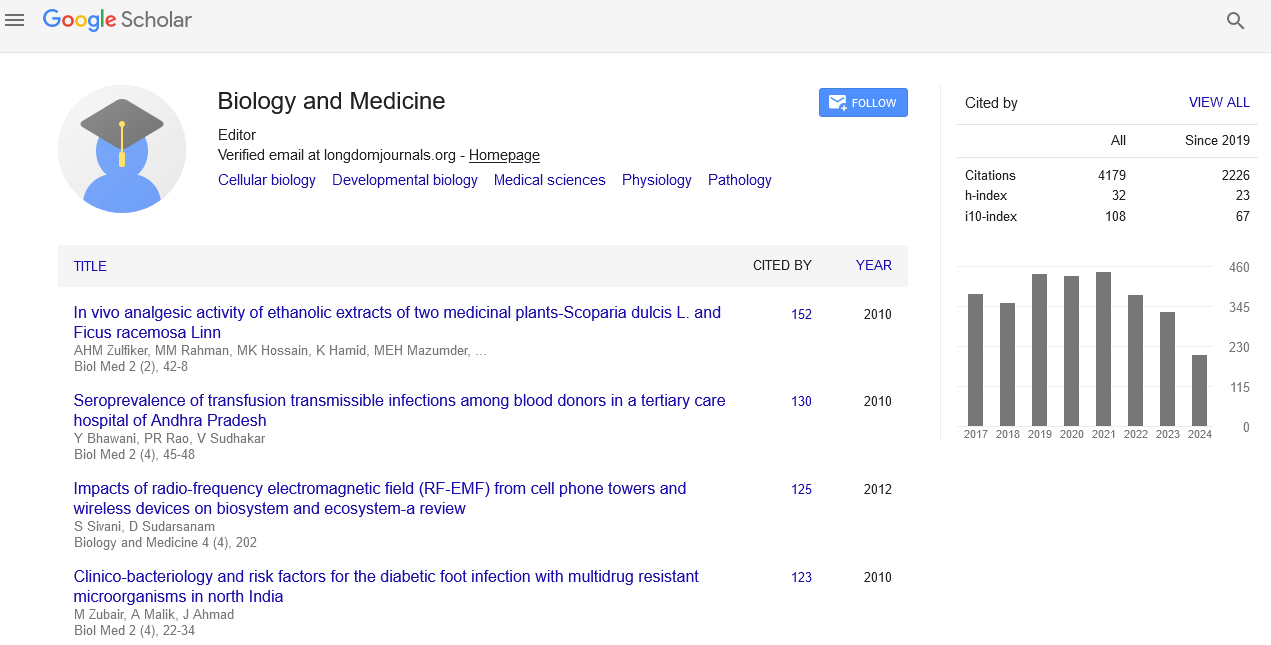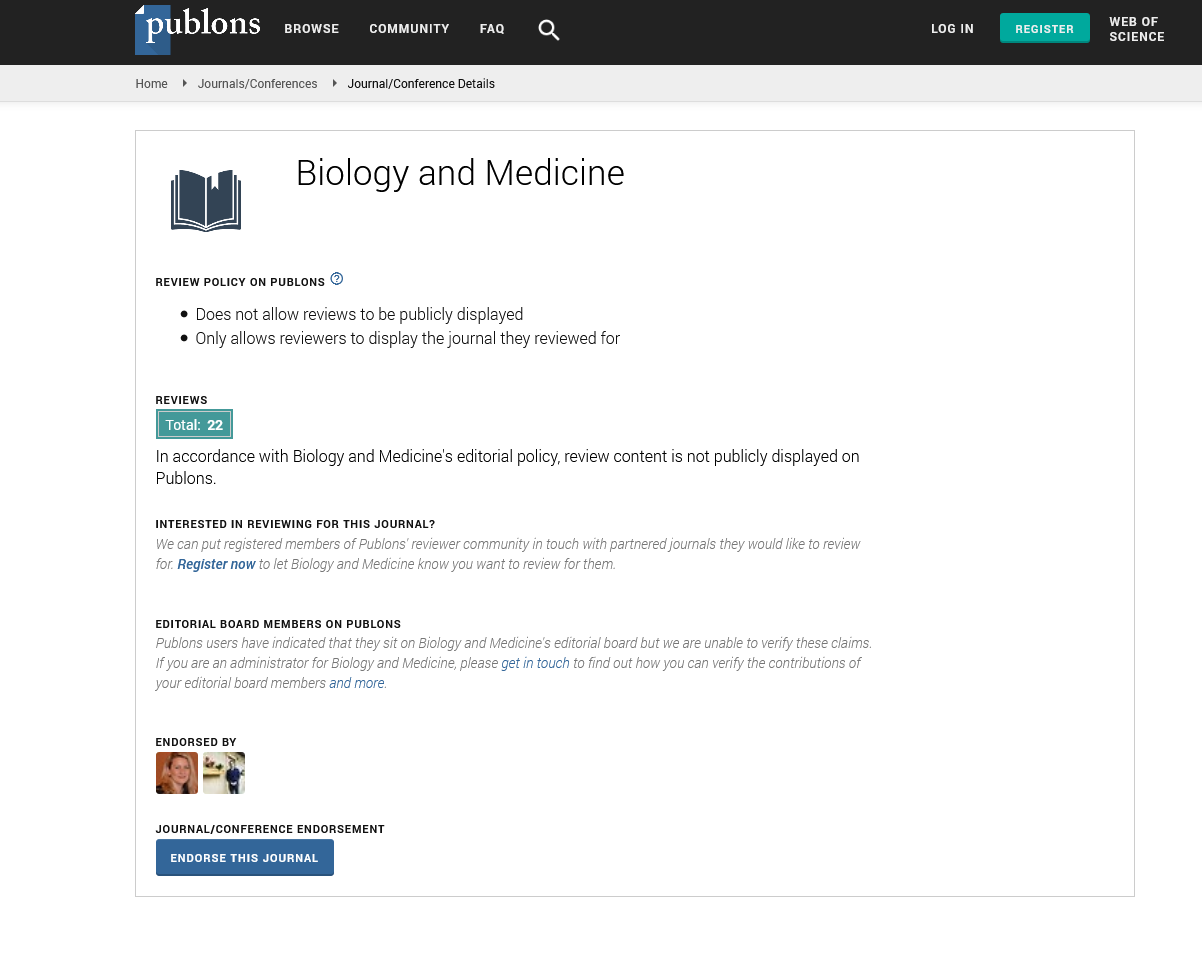Indexed In
- Open J Gate
- Genamics JournalSeek
- CiteFactor
- Cosmos IF
- Scimago
- Ulrich's Periodicals Directory
- Electronic Journals Library
- RefSeek
- Hamdard University
- EBSCO A-Z
- Directory of Abstract Indexing for Journals
- OCLC- WorldCat
- Proquest Summons
- Scholarsteer
- ROAD
- Virtual Library of Biology (vifabio)
- Publons
- Geneva Foundation for Medical Education and Research
- Google Scholar
Useful Links
Share This Page
Journal Flyer

Open Access Journals
- Agri and Aquaculture
- Biochemistry
- Bioinformatics & Systems Biology
- Business & Management
- Chemistry
- Clinical Sciences
- Engineering
- Food & Nutrition
- General Science
- Genetics & Molecular Biology
- Immunology & Microbiology
- Medical Sciences
- Neuroscience & Psychology
- Nursing & Health Care
- Pharmaceutical Sciences
Perspective - (2025) Volume 17, Issue 6
Climate Change and Its Impact on Infectious Disease Patterns
Rajesh Nair*Received: 30-May-2025, Manuscript No. BLM-25-29518; Editor assigned: 02-Jun-2025, Pre QC No. BLM-25-29518 (PQ); Reviewed: 16-Jun-2025, QC No. BLM-25-29518; Revised: 23-Jun-2025, Manuscript No. BLM-25-29518 (R); Published: 30-Jun-2025, DOI: 10.35248/0974-8369.25.17.777
Description
Climate change is one of the most pressing challenges of the modern era, and its effects extend far beyond environmental degradation and ecological imbalance. A critical yet sometimes underappreciated consequence of global climate change is its profound influence on human health, particularly in the spread and intensity of infectious diseases. Altered weather patterns, rising global temperatures, and environmental disruptions reshape ecosystems and create favorable conditions for pathogens, vectors, and reservoirs that transmit infectious diseases. As the planet warms and climates shift, many diseases once confined to specific geographic regions are emerging in new areas, posing unprecedented threats to public health systems worldwide.
Vector-borne diseases are among the most affected by climate change. Mosquitoes, ticks, and other arthropod vectors thrive in warm, humid conditions, and as average temperatures rise, their habitats expand into regions previously unsuitable for survival. Malaria, historically confined to tropical regions, has been reported at higher altitudes in Africa and South America due to temperature increases that allow Anopheles mosquitoes to survive in cooler climates. Similarly, Aedes aegypti and Aedes albopictus, the primary vectors for dengue, Zika, and chikungunya, have expanded their range across Asia, Europe, and North America, leading to outbreaks in regions that had not experienced such diseases in decades. Ticks transmitting Lyme disease have also expanded northward in response to warming winters, increasing the incidence of tick-borne illnesses in temperate regions.
Waterborne diseases represent another dimension of the problem. Climate change contributes to extreme weather events such as floods, hurricanes, and droughts, which compromise sanitation infrastructure and contaminate drinking water supplies. Outbreaks of cholera and other diarrheal diseases are often observed following natural disasters, as warmer water temperatures also facilitate the proliferation of vibrio cholerae and other pathogenic microbes. Droughts, meanwhile, reduce clean water availability and force communities to rely on unsafe sources, further increasing the risk of waterborne infections. The cycle of climate-induced water scarcity and contamination highlights the vulnerability of populations in developing countries, where sanitation systems are often underdeveloped.
Zoonotic diseases also reflect the impacts of climate change. As habitats shift and ecosystems are disrupted, animal species are forced into closer contact with humans, increasing the likelihood of disease transmission. Hantavirus, Nipah virus, and even Ebola outbreaks have been linked to ecological disturbances that displace wildlife and bring them into human settlements. Furthermore, agricultural practices and deforestation exacerbate this risk, as human activities intersect with wildlife habitats in unprecedented ways. The possibility that climate change could influence the emergence of new, unknown pathogens is a growing concern for epidemiologists and public health authorities.
The indirect consequences of climate change also exacerbate infectious disease risks. Migration due to rising sea levels, desertification, or natural disasters forces populations into crowded shelters or urban slums, where diseases spread rapidly due to poor sanitation and limited healthcare access. Malnutrition caused by declining agricultural productivity weakens immune systems, leaving populations more susceptible to infections. Additionally, the strain on healthcare systems during climate-related disasters reduces their capacity to respond effectively to outbreaks. The COVID-19 pandemic has already demonstrated how global health systems can be overwhelmed by emerging infectious threats, and climate change could magnify such vulnerabilities in the future.
Addressing these challenges requires a multifaceted approach. Strengthening disease surveillance systems is essential for early detection of outbreaks in regions undergoing climatic shifts. Integrating climate models with epidemiological data can help predict future hotspots for vector-or waterborne diseases, allowing proactive interventions. Public health policies must incorporate environmental changes into disease control programs, particularly in vulnerable regions. Investment in vector control measures, vaccination campaigns, and improved sanitation infrastructure will be vital in minimizing the impact of climate-related diseases. International collaboration is equally important, as infectious diseases do not respect borders, and global efforts are required to mitigate their spread.
Ultimately, reducing greenhouse gas emissions and slowing global warming remain the most effective long-term strategies for addressing the root cause of these health risks. Yet adaptation is equally necessary, as the changes already underway are altering disease landscapes at an alarming pace. Recognizing climate change as both an environmental and a public health crisis will encourage stronger interdisciplinary action. By uniting efforts across biology, medicine, environmental science, and policy, humanity may be able to safeguard populations from the looming threat of climate-driven infectious diseases.
Citation: Nair R (2025). Climate Change and Its Impact on Infectious Disease Patterns. Bio Med. 17:777.
Copyright: © 2025 Nair R. This is an open access article distributed under the terms of the Creative Commons Attribution License, which permits unrestricted use, distribution, and reproduction in any medium, provided the original author and source are credited.


